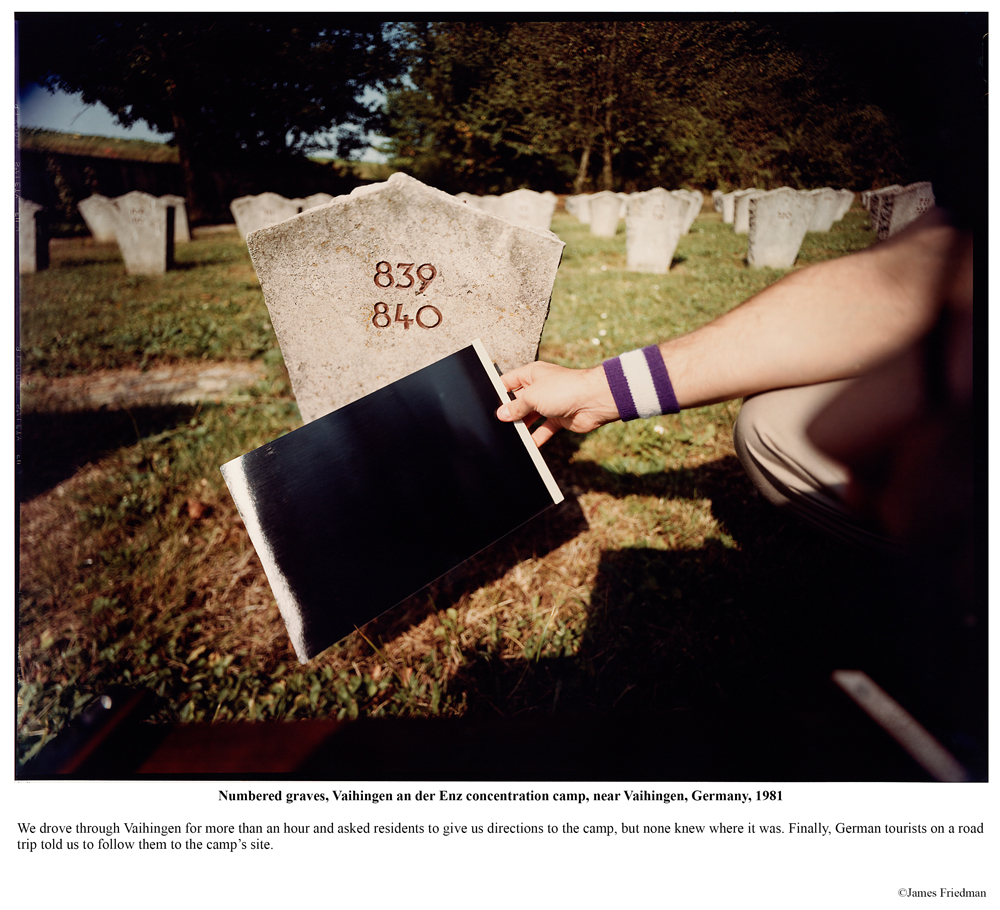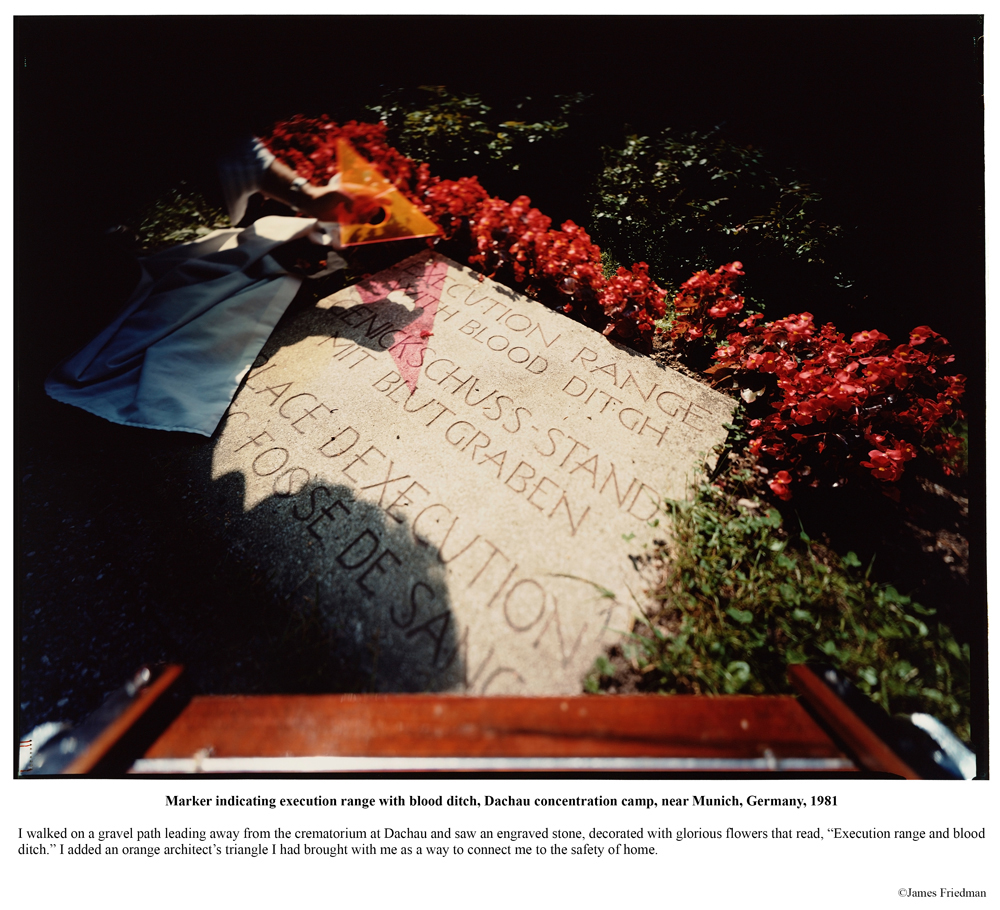James Friedman: 12 Nazi Concentration Camps
(James) Friedman’s ’12 Nazi Concentration Camps’ is arguably the most significant body of photographic work on the concentration camps in the post-Holocaust era…— from Memory Effects: The Holocaust and the Art of Secondary Witnessing by Dora Apel
James Friedman is about to have a solo exhibition of highly saturated images of Concentration Camps that allow for new considerations of memory and place at the FotoFocus Biennial in Cincinnati at the Skirball Museum opening October 13 and running through January 29, 2017. The exhibit will be comprised of thirty 16” x 20” dye transfer color photographs.
Using large format capture, James’ photographs from the early 1980’s challenge they way most photographers choose to present such a profound and emotional subject.
12 Nazi Concentration Camps
The photographs in my archive tell the tale of a life. They are autobiographical. They are personal. They are full of emotion. Some are humorous. Others, such as those from “12 Nazi Concentration Camps,” are confrontational, disturbing, unpredictable and about our collective memory (yours and mine). In the photographs I made in 1981 and 1983 at Auschwitz-Birkenau, Bergen-Belsen, Dachau, Flossenbürg, Fort Breendonck, Majdanek, Mauthausen, Natzweiler-Struthof, Theresienstadt, and Treblinka, I constructed counterpoints to the historical and contemporary photographs of the camps made by a number of photographers, including Margaret Bourke-White, George Rodger and Erich Hartmann. My pictures were created in color with a cumbersome 8” x 10” field camera; the historical and contemporary photographs by other photographers were made with smaller, more portable cameras using black and white film.
The expectation on the part of many viewers is that contemporary photographs of Nazi concentration camps should be in black and white and without people or reference to the contemporary world. My color photographs include self-portraits, tourists and survivors, and have inspired visceral responses in many viewers. During a lecture I presented at the International Center of Photography in New York, an enraged audience member screamed, “You can’t photograph Nazi concentration camps in color, on sunny days. Don’t you know that the Holocaust happened in black and white? There weren’t any deep blue skies or puffy white clouds during the Holocaust. What’s wrong with you? How could you take pictures like that?” Another member of the audience jumped out of her chair and vehemently disagreed with the remarks and a heated argument ensued between them and others who joined in before ICP Director Cornell Capa defused the melee. My color photographs exist in stark contrast to the historical black and white photographic record of Holocaust images that are the basis for most viewers’ knowledge and understanding of the Nazi era.
Posts on Lenscratch may not be reproduced without the permission of the Lenscratch staff and the photographer.
Recommended
-
Salua Ares: Absense as FormNovember 29th, 2025
-
Ricardo Miguel Hernández: When the memory turns to dust and Beyond PainNovember 28th, 2025
-
Pamela Landau Connolly: Columbus DriveNovember 26th, 2025
-
KELIY ANDERSON-STALEY: Wilderness No longer at the Edge of ThingsNovember 19th, 2025
-
Jackie Mulder: Thought TrailsNovember 18th, 2025


















































































